The history of photography is marked by events that saw major advancements in our ability to capture images, and one such instance was the invention of the Kodak camera in 1888. This simple box camera contained 100 exposures on flexible roll film, which could be returned to the factory in Rochester, New York, to be developed and film reloaded in the camera.
This service removed the need for the camera user to have their own darkroom and made photography accessible to casual amateurs. Kodak’s marketing strategy, with iconic phrases such as ‘You Press the Button, We do the Rest’, indicated that the everyday user was their targeted customer.
George Eastman also realised that if he could reduce the cost of a camera, he could make it more accessible, particularly to children. To that end, he asked his camera designer Frank Brownell to design the least expensive camera possible.
Brownell’s solution was the simple and low-cost Brownie camera, first introduced in 1900. The first Brownie was a cardboard box with a simple lens and no viewfinder. It used flexible film that could take six exposures. The ability to load the film in daylight cemented the Brownie’s place in history as the camera that brought snapshot photography to the masses. The initial price was one dollar.
The Brownie name became synonymous with popular photography, and Kodak’s advertisements show clearly that the Brownie was aimed at women and children. The name Brownie itself came from popular cartoon characters invented by Palmer Cox. These cute fairy-like creatures were based on Scottish folklore figures and were some of the first cartoon characters used for mass merchandising. The Brownie Camera Club of America for children was established, and advertising campaigns contained slogans such as ‘Let the Children Kodak ’.


Over the years, the material used in the production of the Kodak Brownie changed from cardboard to metal and finally to moulded plastic. The simple box design remained the same until the 1950s. I have several box Brownies in my own collection, but one of my most precious is a Six-20 Brownie Model D.
My version of the Model D with a plain matt enamel front, metal wind knob and black plastic release button was produced from 1946 to 1953. It was manufactured by Kodak Ltd in Harrow, on the western outskirts of London, and takes 620 roll film as indicated in the name of the camera. The single-leaf shutter has a speed of 1/50s or bulb mode, and the lens is an f/11 meniscus, 100m with portrait lens.
Brownie cameras are easy to come by and, while not rare, my Six-20 Brownie Model D is special as it was passed down to me from my great aunt Breege. She originally bought the camera in 1950 for approximately one pound, which was a lot of money for her at the time.
Until recently, I had not attempted to put a roll through the camera due to 620 film not being widely available. 620 film is the same size as 120 film, but the spool is much thinner and narrower than that of 120 film. You can purchase rolls of 120 film that have been re-spooled onto 620 spools, and you can also try this at home if you have a 620 spool available. Alternatively, you can modify a 120 spool to fit into a 620 camera.
Modifying a roll of 120 film
I decided to modify a roll of 120 film to fit into the Six-20 Brownie, and I will outline the process here. Supplies needed for this task include a pair of scissors or nail clippers, sandpaper, a genuine 620 spool to use for take-up, and an air blower.
The first step is to lay down some kitchen paper or newspaper as it can get dusty when you start to sand down the spools. Take the scissors or nail clippers and use them to trim down the disks at the end of the spool but being careful not to trim so far down that you will expose the film to light. Don’t grip the film too tightly, as this could also expose it to light leaks along the border.
Next, use the sandpaper or a nail file to file down the ends of the spool until they are thin enough to allow it to slot into the camera and turn freely. Some cameras won’t require too much sanding as they will accommodate the wider spools. I found I had to sand down the spool quite a bit so that it would turn smoothly. Be sure to blow any dust off the roll so that it will not impact your photographs.
I had an empty 620 spool to use as the take-up spool and to indicate how thin the ends of the 120 spool needed to be when sanded. It was a quick and easy process, but be aware that it will not work for every camera that takes 620 film. The film chamber on some cameras will only fit a genuine 620 spool, as I discovered on my Kodak Duaflex. If the trimming method doesn’t work in your camera, there are some excellent guides for re-spooling 120 film onto 620 spools.

Before I put a roll through the Brownie, I decided to give it a quick clean as the viewfinders were dusty, and I wanted the best chance of getting clear images. One of the best features of box Brownie cameras is how simple they are to disassemble and clean. On the Six-20 Brownie, the faceplate simply lifts off, providing access to the viewfinders and mirrors for cleaning.

Always be gentle when cleaning the mirrors; you can use glass cleaner on a cotton swab for this task. If the mirrors have come loose, they can be glued back into place. I used a slightly damp cotton pad to wipe down the camera body and faceplate and a microfibre cloth to dry it. I then repeated this task inside the film chamber.
Shooting the Six-20 Kodak Brownie
Once I had a roll of film that would fit into my Six-20 Brownie and the camera was clean, it was time to take it out for a shoot. My great aunt grew up in Navan, County Meath, Ireland, before she emigrated to the United States in 1963. She had intended to be gone for only a year and received her VISA on the day that John F. Kennedy was assassinated. She still lives in the United States and, before Covid-19, would come home to visit every year. I thought that it would be fitting to take some photographs of our town to share with her as she hasn’t been home in some time.
I brought the camera to one of the popular local walks along the River Boyne known as the Ramparts and shot a roll there. The roll of film that I had modified was Fomapan 400, and when I developed the film at home, I realised that the negatives appeared underexposed. I compensated for this in Lightroom after scanning the negatives, and I managed to obtain a few usable images. The day had been quite overcast, which also contributed to the images being underexposed.
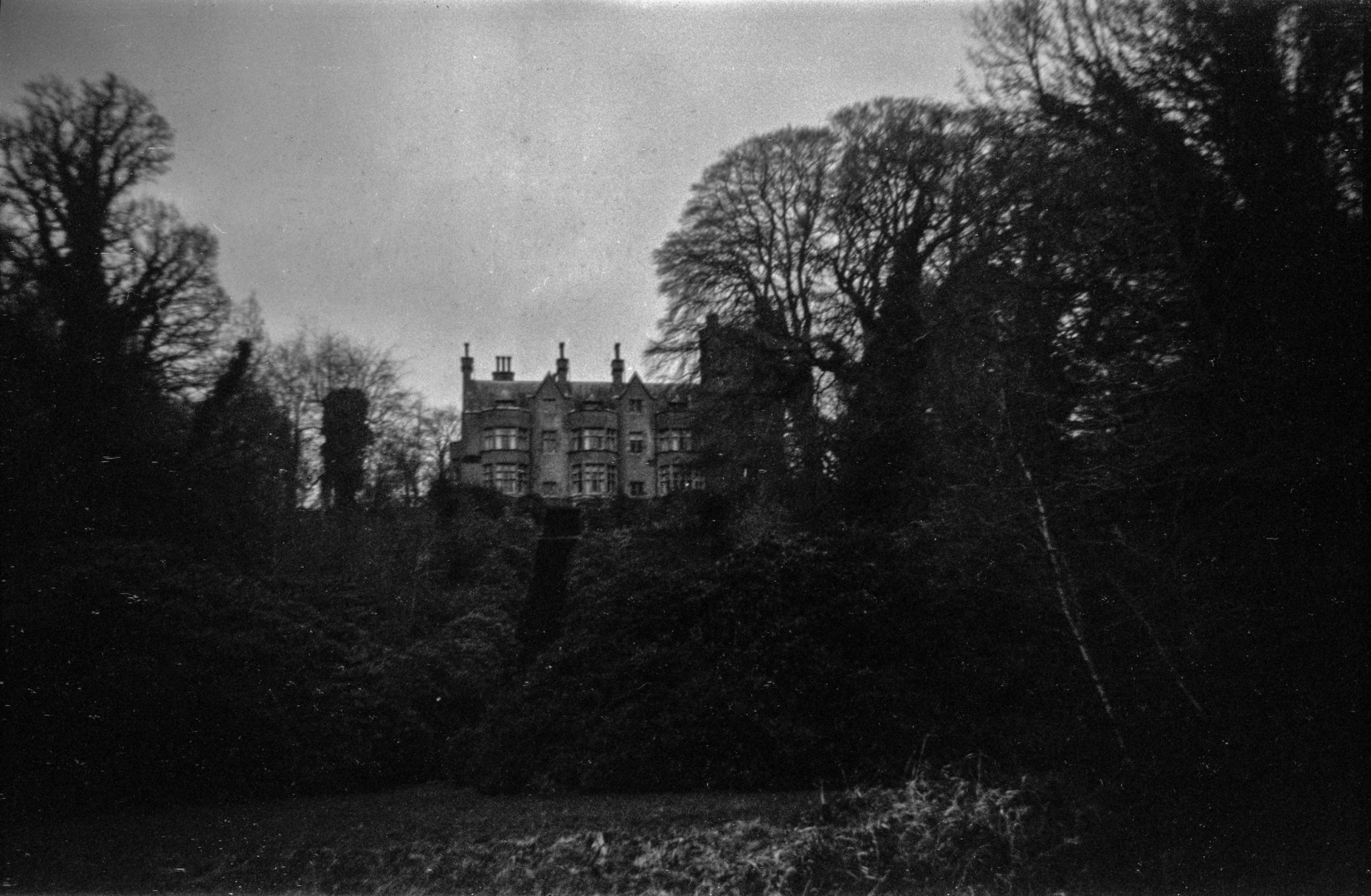
Ardmulchan House, Navan, County Meath 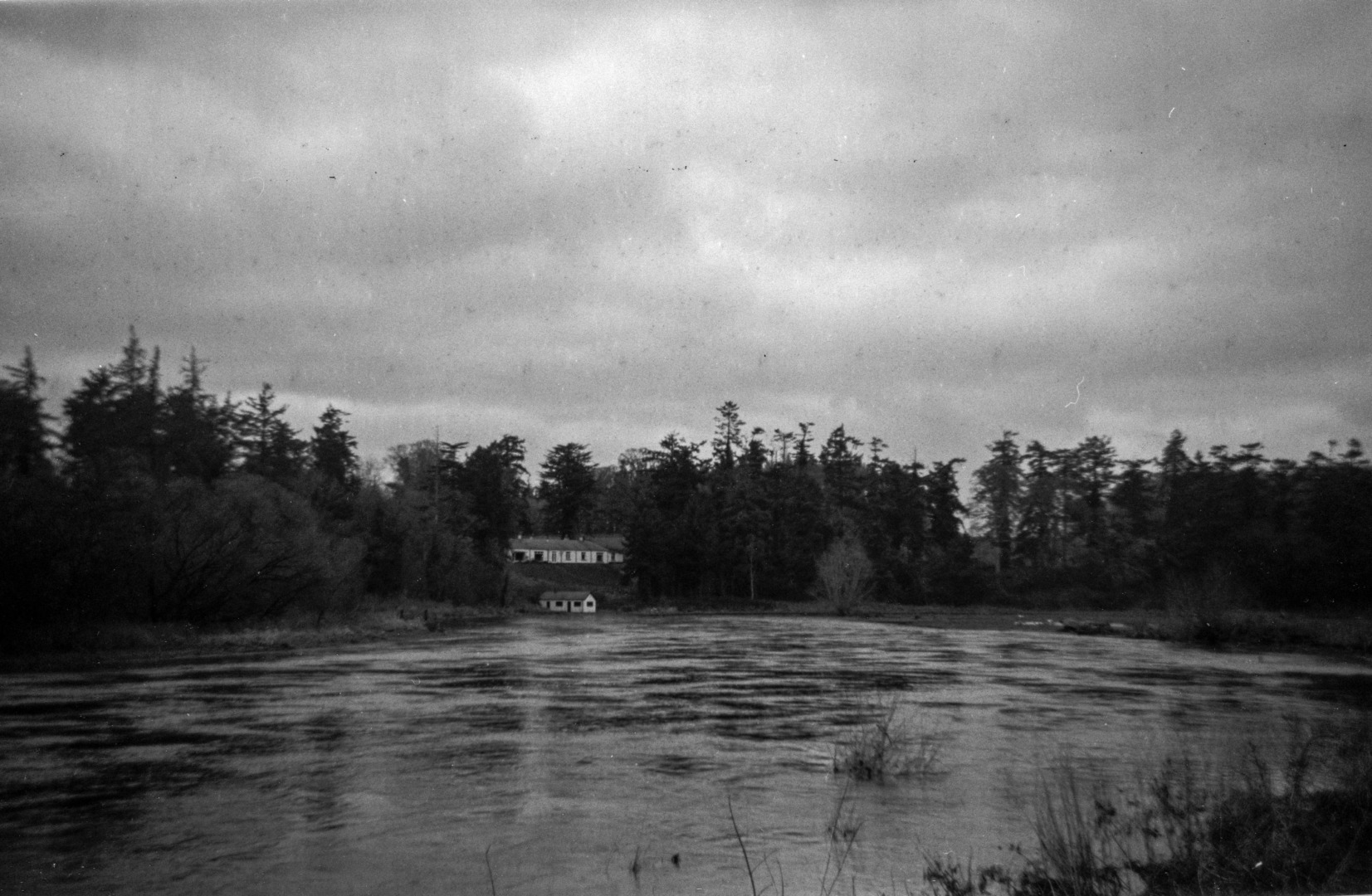
The River Boyne viewed from the Ramparts, Navan, County Meath 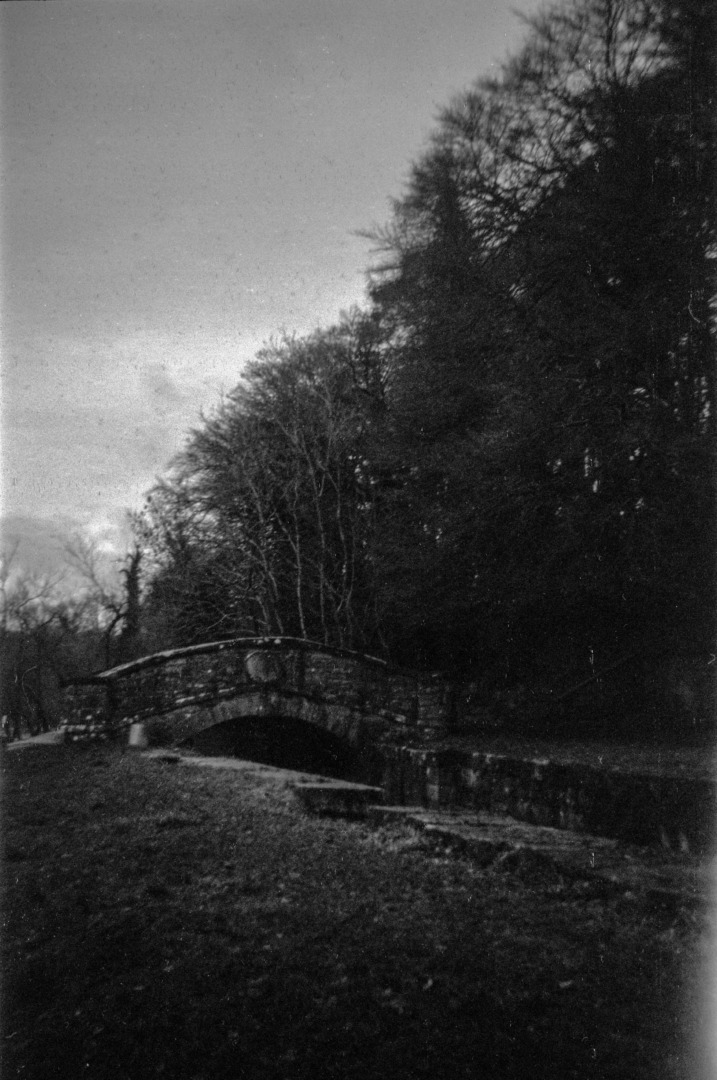
Rowley’s Lock on the Boyne Canal, Navan, County Meath 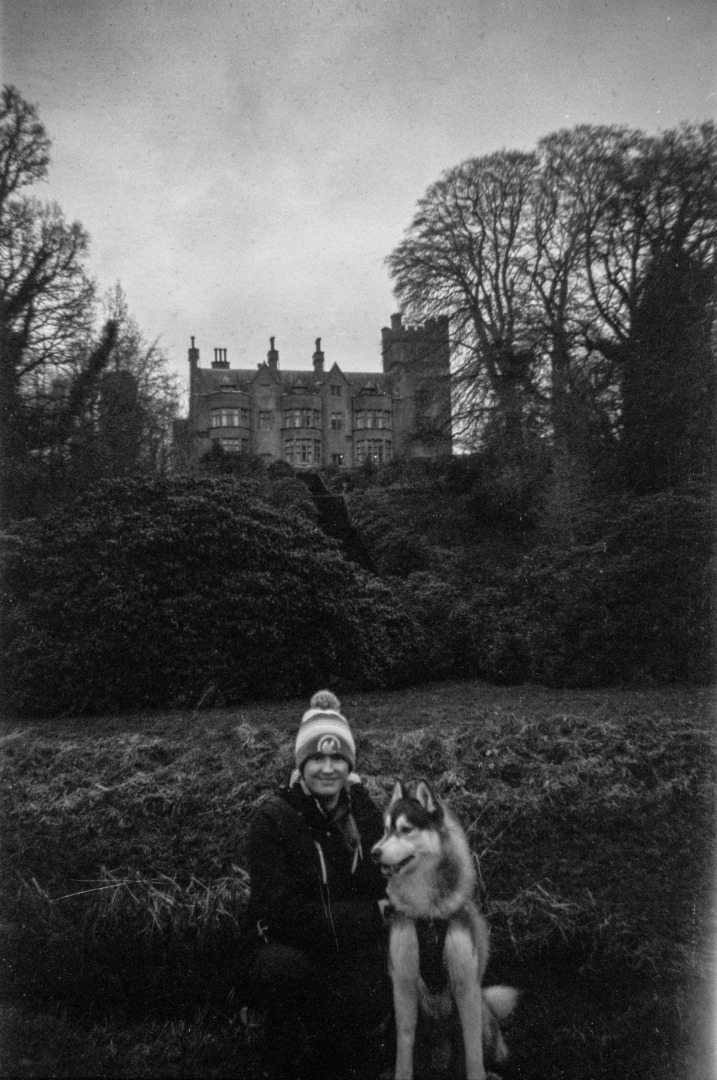
Analogue archivist and her trusty sidekick Odin
I was a little disappointed that the first images were underexposed, and so I undertook some research about the best ISO film to use with a box Brownie. ISO 100 was commonly recommended for use with Brownies as slower speed film would have been used when they were first produced. The manual for this camera recommended using Kodak Verichrome 620 film (no longer available), and this film would have been rated as 125 ISO.
This prompted me to take the camera out for a second trip, this time using Lomography Earl Grey 100, which had been re-spooled onto 620 spools by the Film Photography Project. The weather was sunnier this time, which also helped me to capture some better images. The camera manual for the Brownie states that while full sunlight isn’t necessary, you should avoid shooting in deep shade, early morning or evening.
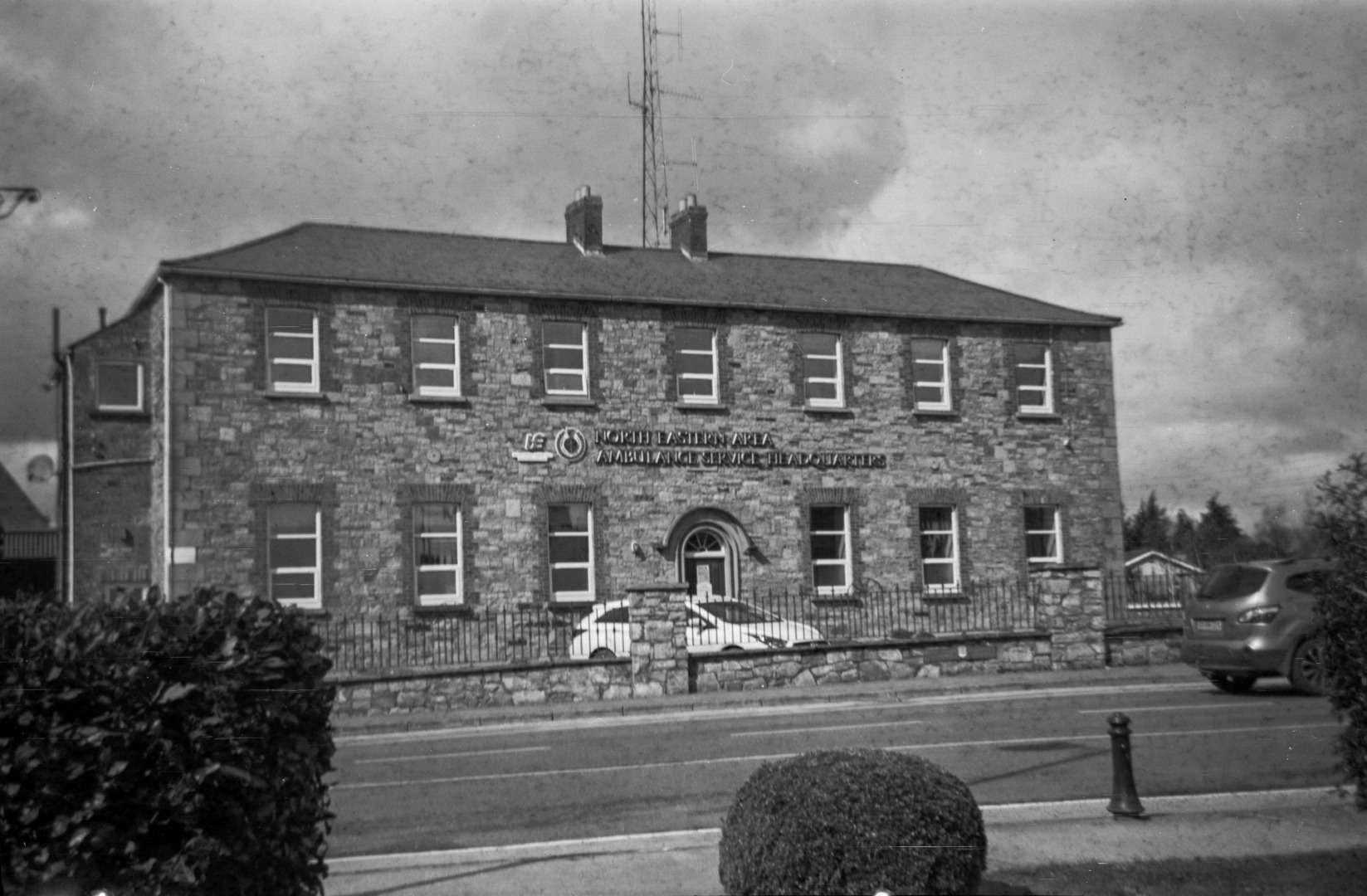
The old Navan Fever Hospital now home to the National Ambulance Service Regional Headquarters, Navan, County Meath 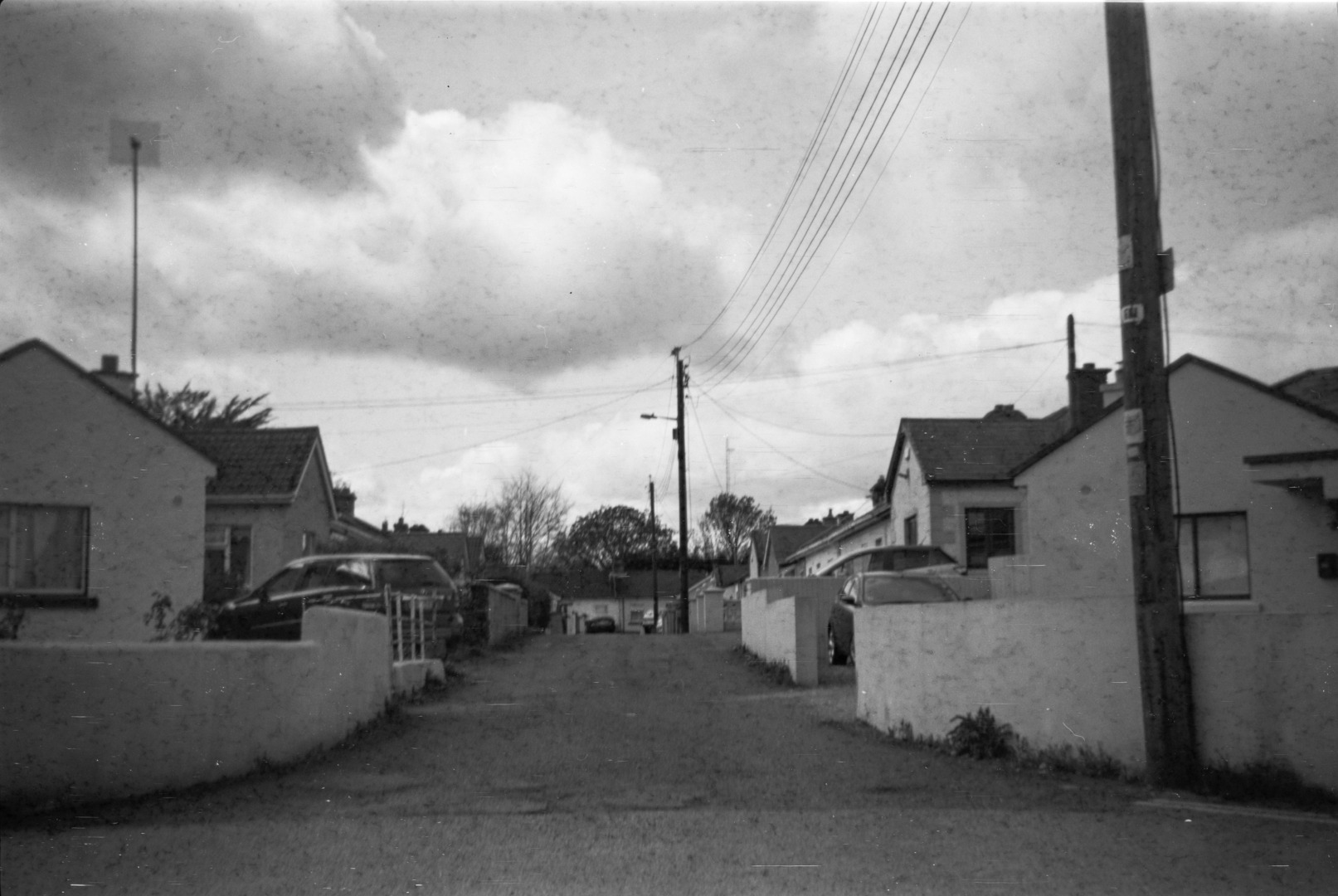
Emmet Terrace Navan where my great aunt grew up 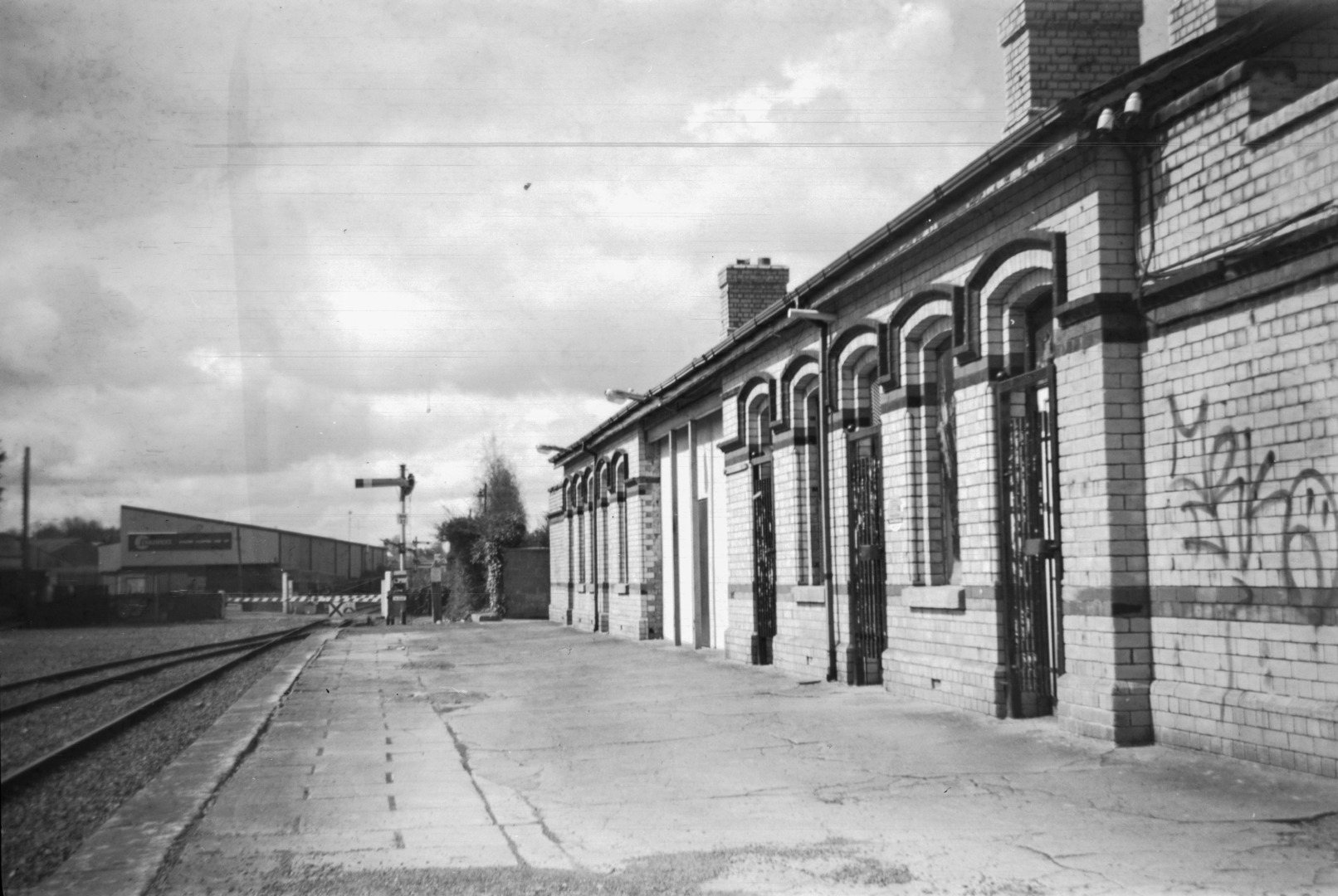
Navan Railway Station, Navan, County Meath
One of the challenges when shooting with a box Brownie is that the slow shutter speed can cause camera shake, and this particular model has no way of being used with a tripod. To avoid as much camera shake as possible, I simply held the camera close to my body and held my breath while taking a shot. This was not always successful, as you can see in the image of Hickey’s Pharmacy. My great aunt purchased the Six-20 in McKeever’s chemist on Watergate Street Navan, the same building where Hickey’s Pharmacy is located today.

Another challenge is that it can be tricky to frame your image in the viewfinders, especially if there is any glare. It would be best if you also covered the red frame counter at the back of the camera with some tape to prevent any light leak since, sometimes, the frame numbers can be imprinted on the negatives.
Despite using film on a genuine 620 spool for the second outing, I did have some trouble with the spool sticking while trying to wind on. This seems to have led to some damage on the negatives in the form of the lines you can see across the top of the images.

Despite its limitations, I found that it was a hugely liberating experience to use a camera that is so simple in its functionality. It was also incredibly meaningful to use a camera that my great aunt had used for many of her own photographs and to be able to share them with her and bring back memories of her own childhood. Shooting with my Six-20 Brownie has proven to me how much the act of photography is about connection, both with people and with our past.
Read more from Lisa Murphy on her vintage cameras
A cup of coffee works wonders in supporting Macfilos
Did you know that Macfilos is run by a dedicated team of volunteers? We rely on donations to help pay our running costs. And even the cost of a cup of coffee will do wonders for our energy levels.

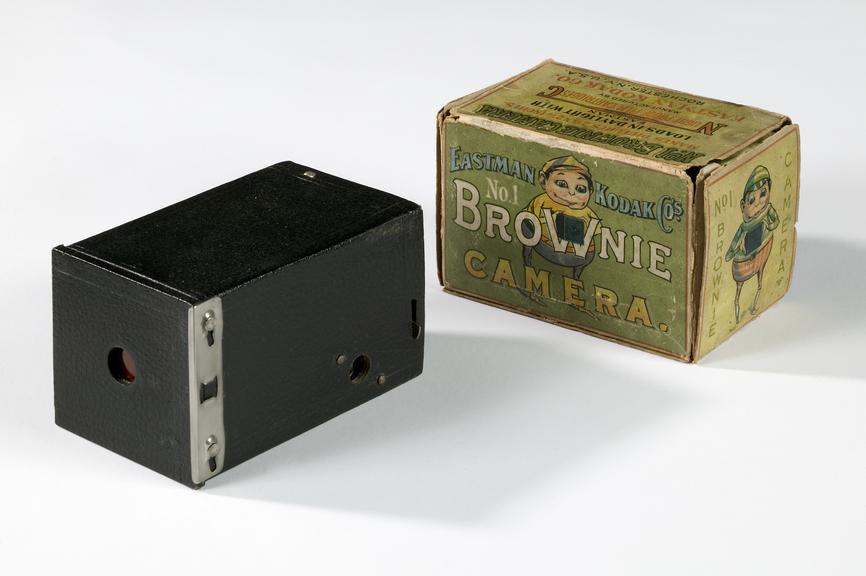
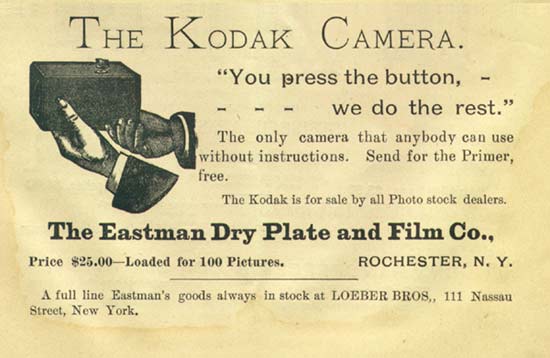
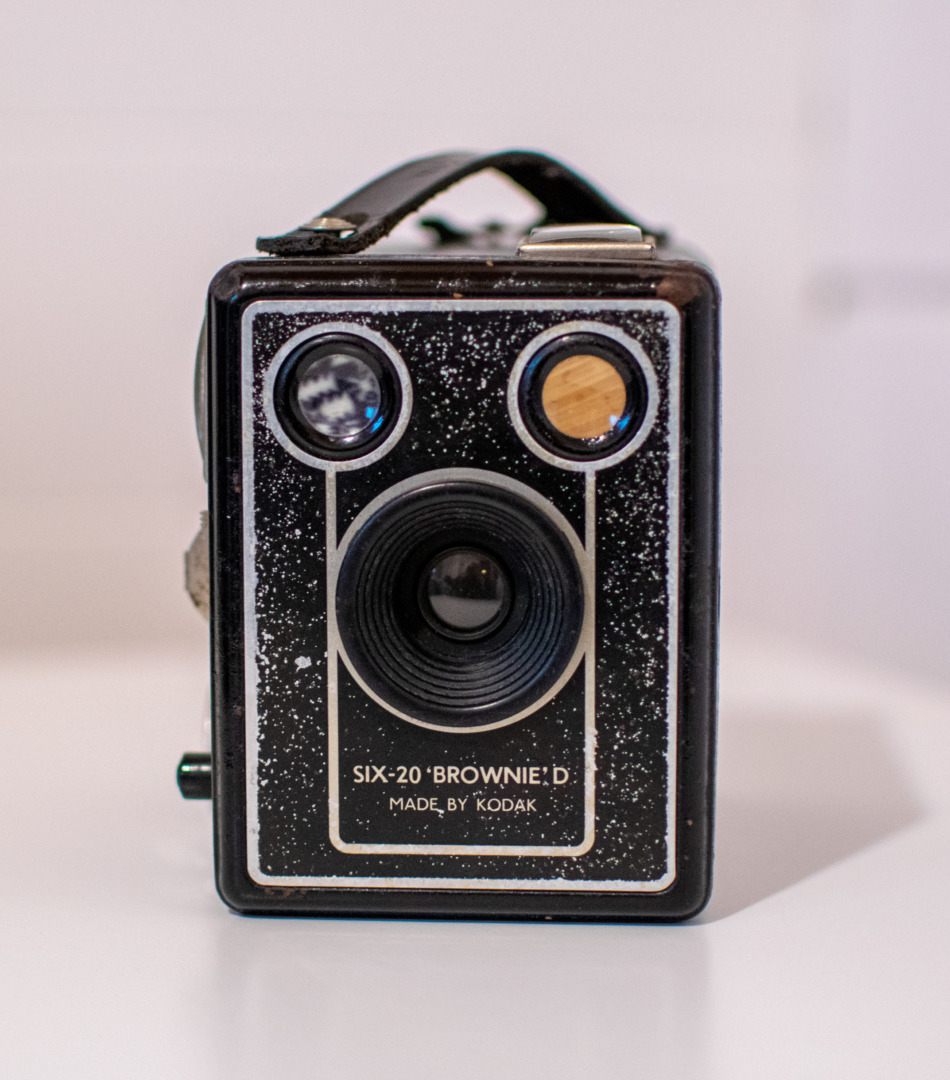
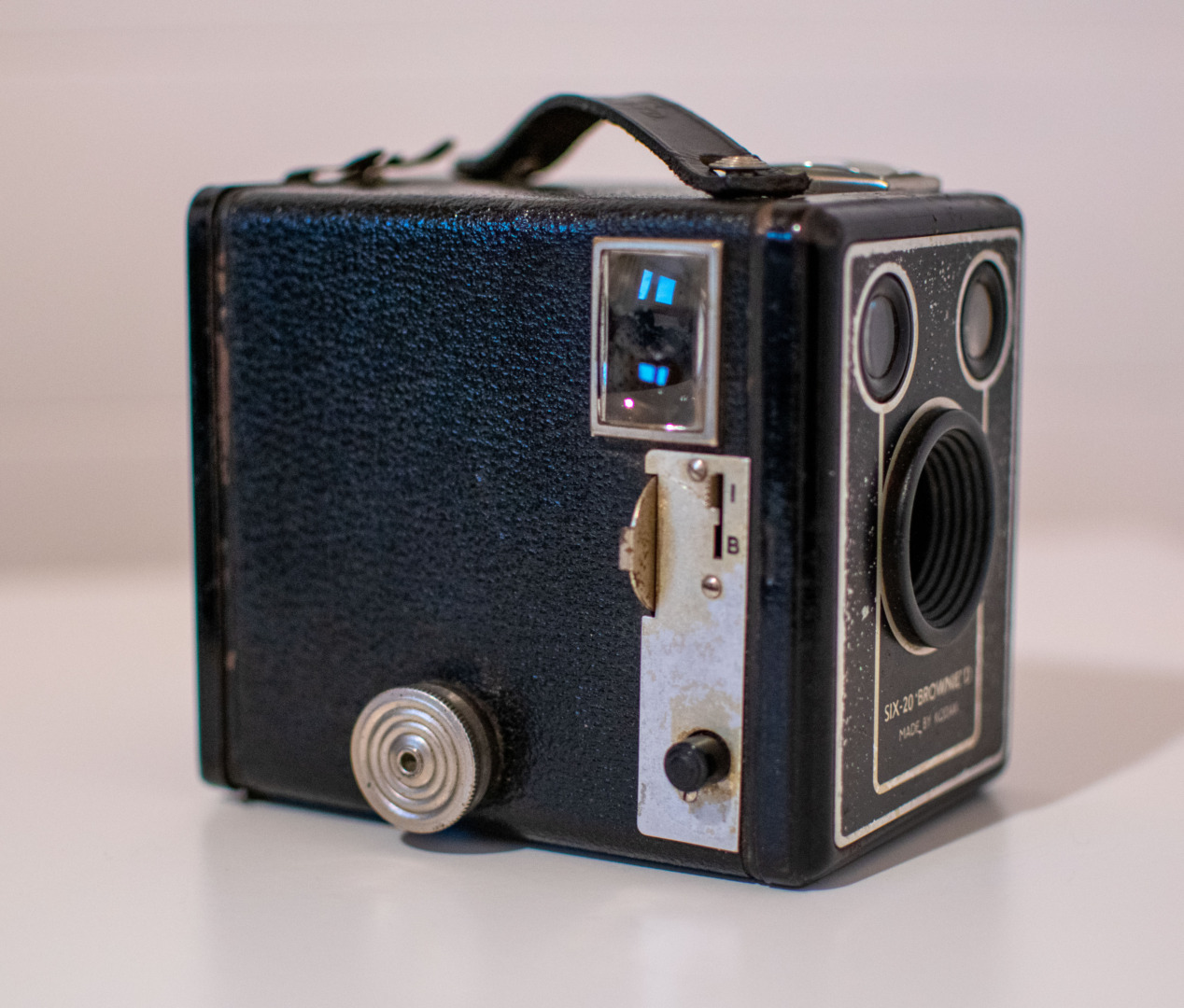

Hi Lisa
I like your article.
My father was a photographer and the first camera I got from him was a Brownie 6 X 9 camera.
Kodak Eastman invented amateur photography. You can see a lot of beautiful lively pictures like holidays, sport, birthdays, people on bicycles and family pictures. The relatively small, mobile and light camera created a new kind of photography.
You could buy the film and developer and paper and a contact frame and develop and print the 6 X 9 pictures at home.
Chemist shops bought electrical contact printers and offered a development and printing service to customers. You could buy the cameras, film, chemicals and paper for photographs in chemist shops.
Recently I got an old family photo album with many 6×6 and 6×9 pictures.
I love it and I shared it with my friends.
You speak about connecting and I still have the pictures and the camera from my father.
Some of the pictures we have photographed together.
Kind regards
Jens Grigull
Can’t remember when or where but I purchased a
Brownie Six-20 Model D “with flash contacts” and promptly put it away in a safe place while searching for the basis info on the camera. I was able to download the manual but other than advising me to use Kodak Six-20 film, it contained almost no technical details so I was at a loss to know what type of film I could use. Suggestions for the ASA / ISO value of the original film varied from 25 asa to 400 asa.
So I am extremely grateful to you, Lisa, for providing the vital stats, i.e. Aperture, Shutter speed and ASA or ISO. Also thanks for the suggestion to cover the Red Number window!
The film I have to hand is an Ilford FP5 which I have trimmed and sanded. My plan is to stick a Red gel filter inside the film chamber which should reduce the effective speed to 100 asa and add some contrast to the clouds.
Hopefully I’ll have some results to report in the near future.
Again, many thanks Lisa Murphy for your excellent article.
P.S, my Model D has a tripod bush (?)
Thank you Lisa for this walk down memory lane.
I remember holding and handling my mother’s Kodak six-20 brownie when I was a young child of early school age, being intrigued by how the two viewfinders did their job. And operating the shutter, sans film because film and developing and printing cost real money in those days.
At some stage in its history one end of the leather handle atop the camera camera came adrift, and I don’t know the ultimate fate of the camera. I do remember at age 7+ having in a pocketable rectangular magnifying glass similar to one of those viewfinder lenses – if it came from mum’s camera I can only blame a child’s technical enquiry combined with the ready availability of a small screwdriver.
But I do remember that it delivered images with a very similar look to those that you show in your article. Special memories.
Thank you for sharing your lovely memories Wayne and I’m so glad the article brought them back. It was also a walk down memory lane for my aunt who gifted the camera to me. She still remembers buying the camera and using it and was thrilled to see it in use again. I think this is part of the joy of photography and camera collecting, evoking memories and giving new life to cameras!
Best wishes,
Lisa
There seem to be plenty of 620 spools on a popular auction site …
Absolutely! And I do have a few 620 spools myself. I just wasn’t brave enough to attempt re-spooling 120 film onto a 620 spool. It seemed easier to trim the spools down and avoid the stress of the changing bag!
Lisa
I learnt a lot from your article Lisa … I have at least one 620 camera … so another project beckons. TYVM.
Thanks so much! I hope you do get out with your 620, it’s an incredibly fun way to spend a few hours and exciting to see what turned out on the roll!
Lisa
It was a sheer delight to read your article and recall my days with my Brownie E. It had very clear viewfinders and produced sharp contact prints which I did myself in the blacked-out larder at home. It also had two buttons to which a – by prent day standards – very large flash gun could be attached. The flash was produced by single-use bulbs which exploded inside a plastic covering. While I still have some negatives, the camera was given to a historical photo museum here in Denmark where I live. (Regret, regret…..) The word I really pick up in your article is “connection”, because that recalls my experience, too. And after years of digital zooming, I am just beginning to rediscover the “connection” that comes with using a single focal length lens, which I think is really like having a digital box camera!
Thank you for your lovely comment John! I’m delighted you enjoyed the article. I definitely think that limitations often force us to think differently about how take pictures, which isn’t a bad thing. For me it was just a joy to experiment with the camera and to provide a connection to home for my aunt.
Best wishes,
Lisa
Lisa, it is great to see the final version of this article showing lovely photos around your home place. Camerhack in Italy makes spacers for going from a larger size spool to a smaller one eg 116 to 120, but you cannot use them going in the other direction. However, if you have mastered taking 120 film onto a 620 spool or have a source of re-spooled film then all is right. I have a couple of spare 620 spools which I will give to you when I see you. I also have some original Kodak instructions for a 620 folder which I will also give you. One of the difficulties with using early cameras is that even if you have the original instructions then you still have to do mental gymnastics to work out exposures, but with a camera like the Brownie you are largely relying on film latitude anyway given the absence of speed/aperture controls. Using the even earlier Vest Pocket Kodak for a Macfilos article some years ago I largely relied on guesswork and prayers as the camera had been made long before the concepts of DIN, ASA or ISO existed.
I have a ‘customer’ for learning your Box Brownie skills living not far from you and I am going to send her a link to this article right now. I am also embarking on an exercise in extinct film sizes, 828 film for my Kodak Bantam Special. 828 film is actually 35mm film with no sprocket holes on a paper backing and for development the trick is to remove that backing as you are putting the film onto a developing spool. My good friend Mella at the Darkroom here in Dublin who helped me with my ‘Swiss Photos’ tells me that she has worked with 828 film before.
The revival of interest in film has seen a growth in the learning/relearning of skills that had been thought to be lost in the current automatic everything digital era. Your fabulous website is a great resource, which will grow in value as you add more material to it.
William
Thank you so much for the kind words William. It was a fun experiment and brought great joy to my aunt who gifted me the camera! Shooting the brownie has been a great learning experience and if it maybe inspires people to dig out their own box brownies then all the better! I’m really looking forward to seeing your bantam results.
Chat soon,
Lisa